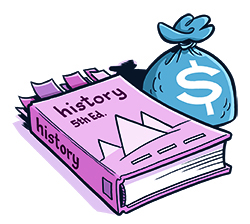Changing your career can be challenging or exhilarating or, for many people, much too scary to contemplate. We may feel stuck or unwilling to change because of finances or geography. We’re too afraid to start over and tackle what’s unfamiliar or unknown. Or our job is so much a part of our identity that it seems impossible to consider anything else.
“Those who do change are courageous,” says nationally recognized career coach Kathy Caprino. “They understand that in order to stretch and be happy, they have to be afraid. They also have to have goals they believe can be achieved.”
Smart career changers, she says, should follow a five-point plan:
1. Start with an honest and significant consideration of who you are. Caprino’s clients fill out an 11-page questionnaire to begin the process. “You have to dive deep and think about the talents you have, your biggest dreams, what form those dreams could take — who you really are. You really need to peel back the layers.” 2. Look at the patterns in your life that make you unhappy. Jumping from one career to the next won’t erase unresolved issues. If you don’t tackle those issues (I’m never paid enough, I can’t get along with my boss) they will follow you to the next job. 3. Create a vision, a burning desire to do something new. (See Step 1.) 4. Immerse yourself in this new (potential) profession. Spend as much time as possible volunteering, interning and interviewing with professionals in the field. Decide if you want it to be a hobby or a job. 5. Develop a plan with goals to reach. Involve mentors, sponsors, or others who will keep you accountable.
The five Grinnellians here made changes that significantly transformed their identities and more importantly, their quality of life. The switch from one career to another wasn’t easy and took years of study and practice, either formal or informal. But for each of them, life is richer and more satisfying for the change.
Corporate video producer to science teacher:
Phil Dworkin-Cantor ’86
 In the weeks following 9/11, the streets of downtown Chicago, like those in most American cities, were eerily quiet, giving Phil Cantor time to reflect on his life.
In the weeks following 9/11, the streets of downtown Chicago, like those in most American cities, were eerily quiet, giving Phil Cantor time to reflect on his life.
On Sept. 6 of that week, he and his wife’s twin girls were born two months premature. After airplanes struck the World Trade Center and the Pentagon, the editor at Cantor’s video production company fled Chicago, leaving him to handle hundreds of hours of footage on his own. Sitting in an editing suite until midnight most nights, then walking on deserted streets to visit his babies in the intensive care unit, Cantor began reconsidering his future.
The videos he made for nonprofits such as Chicago’s Field Museum, on Sue the Tyrannosaurus rex, were rewarding. The videos showing sales people how to demonstrate pointless new kitchen gadgets were not.
“Everything was so uncertain at that point,” he says. “I cared more about the future because I had these tiny babies and I wanted to do something more valuable — because who knew how long we’d be here? I wanted to make an impact.
“Doing the T. rex video reminded me how much I loved science,” says Cantor, who majored in psychology at Grinnell. “I had forgotten that.” He decided to stop making videos and instead teach science.
Since he didn’t have the financial option of taking two years off to get his master’s and teaching certification, Cantor found a program that would qualify him much faster. Northwestern University’s Golden Apple Teacher Education summer program certified math and science teachers in just eight weeks. He enrolled the following summer while simultaneously student-teaching in a Chicago science enrichment program.
The quickie certification left him woefully unprepared. In September 2002 he was thrown into teaching five classes, each with 32 sixth-graders and no curriculum. “I was up until midnight every night agonizing over getting lessons done, figuring out how to deal with behavior problems, and creating materials,” recalls Cantor, who unlike many of his peers stuck it out. (It’s estimated that nearly half of new teachers quit within their first five years of teaching.)
He’s now in his 14th year teaching science to Chicago Public Schools students.
“Part of why I was able to continue was the students — they’re pretty awesome — once I was able to not be overwhelmed by their difficulties,” he says. Today he teaches biology and advanced-placement psychology at North-Grand High School in Chicago’s heavily Hispanic West Humboldt Park.
In 2012 Cantor earned a master’s degree in education policy. He is currently a master teaching fellow in the National Science Foundation’s Project SEEEC (Science Education for Excellence and Equity in Chicago). He mentors student teachers and is enrolled in an NSF-funded doctoral program in science education which focuses specifically on teaching science in low-income Chicago neighborhood schools. “I’ll be studying what we can do to get our kids more excited about science and how to make it more relevant to their lives.”
He’s also politically active, working on issues from getting an elected (rather than appointed) school board in Chicago, to reopening schools that have been shut down, to promoting a social justice curriculum.
“I like working hard and I like fighting,” admits Cantor. “And while I miss some of the aspects of production work, the reward of working with students vastly outweighs that. Every day I get a chance to impact kids’ lives.”
Attorney and pastor:
Don Heath ’79
 On a recent Sunday at Edmond Trinity Christian Church (Disciples of Christ) in Edmond, Okla., the Rev. Don Heath preached on the topic of downward mobility, based on Mark 10:17–31. In that passage, Jesus advises a wealthy young man seeking eternal salvation to sell his possessions and give his money to the poor. The man walks away dejected.
On a recent Sunday at Edmond Trinity Christian Church (Disciples of Christ) in Edmond, Okla., the Rev. Don Heath preached on the topic of downward mobility, based on Mark 10:17–31. In that passage, Jesus advises a wealthy young man seeking eternal salvation to sell his possessions and give his money to the poor. The man walks away dejected.
Heath tied the passage to the environmental theology movement, which suggests radically downshifting our lifestyles to accommodate climate change. “We need to do much more than change the kind of light bulbs we use,” says Heath.
Two days later, Heath, who majored in Russian and history at Grinnell, was behind his desk at Hirsch, Heath & White, PLLC, where he specializes in issues of real property, probate, and oil and gas. The Oklahoma native has been practicing law since he graduated from University of Oklahoma law school in 1982.
Heath describes himself as “bi-vocational.”
“Law allows me to pay the bills, and ministry allows me fulfillment,” says Heath, who was in his early 40s when he decided to attend seminary. “I started taking my daughter to church and reading the Bible and studying, and really getting involved in the church.” He grew up in a churchgoing family but left religion behind in his 20s.
From 2001–09, Heath took two classes per semester, one day a week, at nearby Phillips Theological Seminary in Tulsa. “They set things up so that people can work while going to school.” A single dad at the time, Heath met his wife Mary, an elementary school teacher, at the seminary; today she is co-pastor of their church. He preaches one Sunday and she preaches the next.
“It’s a fairly progressive congregation that welcomes LGBT folks,” Heath says of the left-leaning Disciples of Christ. Their philosophy, in fact, states that the church “welcomes all people of diverse race, ethnicity, gender, sexual orientation, and socioeconomic status to worship and participate fully in all aspects of church life in a safe, loving, nurturing, and compassionate community.”
“We got involved in the climate march last year and the International Day of Peace and we go to the Pride Festival every year,” he says. They’ve also rallied to abolish the state’s death penalty. “There aren’t many like ours in Oklahoma; the vast majority are on the other side (politically).”
Heath divides the workweek into chunks. Sundays and Mondays (and Tuesdays, when he is preaching) are ministry days. Wednesday through Friday are law days. “It’s hard to go back and forth on the same day between ministry and law,” he says.
“I enjoy the law and it’s challenging, but a lot of attorneys, after they’ve been at it for 15 years or so, realize that the system sucks. You feel like you’re moving money from one pocket to another. I was really looking for something that gave me more satisfaction,” he says.
“My idea of retirement would be having one job. I’d like to just do ministry, but it’s not going to work out for now.” Still, bi-vocationality is a more satisfying way to live life. “I have a deeper spirituality,” Heath says. “I listen more and I’m not so quick to jump in and assert my opinion. Being a pastor has made me a better person and a better attorney.”
College basketball coach to financial business consultant:
Mike McCubbin ’88
 For years, Mike McCubbin, former captain and MVP of the Grinnell men’s basketball team, dreamed of being a college basketball coach.
For years, Mike McCubbin, former captain and MVP of the Grinnell men’s basketball team, dreamed of being a college basketball coach.
Soon after graduating he began what he calls his coaching quest, working as a volunteer assistant at Division 1 Siena College (New York) and working “a bunch of part-time jobs to support my coaching habit.”
The hard work paid off, and after three years he was hired by the legendary Stan Van Gundy — currently head coach of the NBA’s Detroit Pistons — as an assistant at the University of Massachusetts, Lowell. After that McCubbin moved up the coaching ladder, first landing a full-time assistant’s job at Siena, then working as an assistant at University of Rochester.
In September 1998, the 32-year-old hit the jackpot and was hired as head coach at Colorado College in Colorado Springs. His eight-year stint as head coach was the longest of any Colorado College basketball coach since the 1970s. He also satisfied a life goal by making it to the 2004 NCAA Tournament (just the second time in school history), leading a group of seniors that four years earlier had won only a single game.
But being a successful coach at that level, besides the high stress and constant risk of getting fired, meant 15-hour-plus days and a lot of travel.
“When you’re single you’re willing to do what it takes, like making calls until 10 or 11 at night four nights a week. That’s sustainable,” recalls McCubbin, who lives in suburban Denver. Even driving a van full of college kids to a tournament Christmas week seemed doable. But not if he wanted to spend significant time with his wife and own kids.
“I was married for a year before I quit coaching” in 2006, says McCubbin, who now trains, recruits, and mentors young financial service professionals at Charles Schwab in Lone Tree, Colo.
“I was at a point (after getting married) where I knew I wanted to do something different. I enjoyed what I did but the lifestyle wasn’t one that I saw as conducive for family and what I wanted to do with my future, so the question was, ‘OK, what’s next?’”
The process “was to look for what I wanted to do and tie it back to what I’ve most enjoyed and been engaged in. For me it was helping other people be more successful than they could be on their own. That’s the common thread that drives me.”
A colleague had gone into finance, and when McCubbin researched the field, he found that coaches, teachers, and recruiters had an excellent chance of being hired without previous experience. He decided he would enjoy the work and could also make a living at it.
At 39, McCubbin got off the coaching carousel. “I didn’t want to wait three or four more years to make a career change,” he says, “but I don’t know if I would have been nearly as prepared to be successful in my current role if I was younger. And I still have quite a bit of career in front of me to make an impact.”
Happily married and the father of a 6-year-old son, McCubbin, whose title at Schwab is acquisition delivery market manager, often stands in front of a white board instructing young employees how to be more effective on the phone; he also recruits within his own organization. “It’s a lot like being a small college basketball coach, just in a different industry.”
When his wife asked him to coach his son’s flag football team, the answer was no. “I was so passionate about coaching but it’s an extreme lifestyle and the hours and emotions can consume you at some levels. These days I’m a fan,” he says, smiling.
Cardiologist to farmer and llama breeder:
Carlos Mendoza ’72
 Retired cardiologist Carlos Mendoza never imagined he would one day own a farm. Nor did he picture himself breeding llamas, those tall creatures with adorably fuzzy faces and (literally) spitting-mad personalities. But after 30 years in a thriving Denver cardiology practice, he has happily transitioned to a radically different life.
Retired cardiologist Carlos Mendoza never imagined he would one day own a farm. Nor did he picture himself breeding llamas, those tall creatures with adorably fuzzy faces and (literally) spitting-mad personalities. But after 30 years in a thriving Denver cardiology practice, he has happily transitioned to a radically different life.
That lifestyle change began in 1996 when Mendoza, still practicing medicine and single with no children, grew tired of suburban living. He started looking for open space — 5 acres or so — to live on. “I wanted to get up in the morning and look outside my door and let my dogs out,” he says. But zoning laws made buying small acreages difficult; he instead found a 200-acre parcel of land north of Denver, in unincorporated Weld County. He sold his house, moved a modular home onto the property, hired a tenant farmer — who continued row crop-farming, including corn, sugar beets, and pinto beans — and commuted to his office in Denver, until retiring in 2012.
The longer Mendoza lived on his 200 acres, however, the more intrigued he became with farming. In 2000, he started farming himself, replacing the crops with perennial grass pastures, which provided hay that was baled and sold for local livestock. Mendoza would wake at 4 a.m. to get in a few hours of farming before making hospital rounds. Tasks included moving irrigation systems, feeding animals, and cutting and raking hay when the pastures were ready for baling. He would then work at night on the farm for a few hours after he returned home. “It was a huge challenge, and I like challenges,” says Mendoza, whose brother Guillermo Mendoza ’68 is also a doctor and whose late father Guillermo (Bill) Mendoza taught zoology and biology at Grinnell for 34 years.
A year after he bought the farm, Mendoza brought llamas onto the land; there are now about two dozen living there. “I had seen llamas at a bed-and-breakfast in Mendocino and thought they seemed kind of cool,” Mendoza says. “They eat our weeds and we use their manure, and we sell and show them.” Once sheared, their wool is sold for yarn and felting.
The change from cardiologist to farmer/landowner coincided with his impending retirement and the changing health care landscape, explains Mendoza. In the past few decades, the practice of medicine had become less enjoyable; doctors were losing their independence as their practices were bought out by hospitals and other corporations.
“I bought the equipment — balers, tractors, irrigation equipment, buildings, storage space — while still working as a doctor, so when I retired I didn’t have to buy anything substantial,” he says. “A friend encouraged me to invest money in the farm and that was good advice; it’s appreciated much faster than anything I could do in the stock market. Plus it’s my retirement career, and it makes sense to invest in your career if it’s something you want.” At 62 he was ready to leave cardiology and be his own boss again — on the farm.
Mendoza employs a full-time and a part-time worker who do the bulk of the farming, although he labors about six hours a day, doing everything from irrigation to hay baling and anything else that’s needed. The farm produces about 600 tons of grass hay a year, along with champion show llamas.
“I’d never done anything like this before,” says Mendoza, who calls himself a self-taught farmer. “My dad was a pre-med counselor at Grinnell, and he was the strongest influence I had, advising us to avoid getting bogged down intellectually in our medical career. ” It was advice Mendoza took to heart.
Banker to college history professor:
Georgia Mickey ’66
 “I should have been in academia from the start,” says Georgia Mickey. “My mother was a high school English teacher, and my grandfather was a professor of American history at the University of Chicago.” But getting a late start hasn’t hurt Mickey’s second career. After earning her doctorate at the age of 55, she completed several postdoctoral fellowships and now, at 71, is a happily tenured associate professor of East Asian history at California State Polytechnic University, Pomona.
“I should have been in academia from the start,” says Georgia Mickey. “My mother was a high school English teacher, and my grandfather was a professor of American history at the University of Chicago.” But getting a late start hasn’t hurt Mickey’s second career. After earning her doctorate at the age of 55, she completed several postdoctoral fellowships and now, at 71, is a happily tenured associate professor of East Asian history at California State Polytechnic University, Pomona.
A former banker who spent much of her career putting together deals for clients in New York, London, and Hong Kong, Mickey graduated from Grinnell with a degree in Spanish, eventually ending up in Washington, D.C., where she became the second female associate at Booz Allen Hamilton. While her analytical skills served Mickey well, her gender didn’t. “I hit the glass ceiling in the late 1960s and moved to New York, ending up in banking and corporate finance.”
After earning an M.B.A. from Columbia University to advance her career, Mickey found her niche, becoming one of the few women working in ship financing. “I really enjoyed that because it was intellectually stimulating,” she says. “I also enjoyed the customer contact. Shipping companies are generally family-owned, so you really got to know people at a very personal and professional level.”
But commercial banking changed drastically in the 1980s, and the increasingly cutthroat nature of the business turned her off. “It became more of a deal-driven, rather than a relationship-driven business, so in my mid-40s, I left.”
She worked at several small bookshops on Madison Avenue while figuring out what to do next. An ad for a master’s degree program (aimed at older students) at Columbia University’s School of General Studies caught her eye. Mickey, who since taking a high school course on Asia and living in Hong Kong for three years had been fascinated by the region, started coursework in East Asian studies. The classes sparked the idea of becoming an academic. At 49, she enrolled full time in Columbia’s Asian studies department to earn a master’s, so she could eventually apply for the school’s doctoral program.
“I was utterly captivated,” she says of her studies. “I had a fantastic experience.” She learned Chinese in her mid-50s and spent time in China researching her dissertation.
After earning her doctorate in 2004, she completed two postdoctoral fellowships, first at Stanford University’s Center for East Asian Studies and then at Columbia University. While many Ph.D.s complain that getting hired for a full-time post past age 35 is nearly impossible, Mickey found the right situation at Cal Poly and at 62 landed a position.
“I didn’t have dates in my resume, and I look younger than my actual age,” she admits. “I think the students would be horrified if they knew how old I am. But it doesn’t make a difference to me. I get along just fine with my students and that has something to do with Grinnell, because I like to give them the kind of experience I had at Grinnell.”
Cal Poly is one of the most diverse colleges in the nation, says Mickey, and she enjoys her mostly first-generation college students. “It’s really fun when you’re in a classroom and you watch their eyes light up. There’s something very magical when you realize the class is with you.”
Teaching, says Mickey, is perfect for her. “I get to do a lot of different things, from organizing a new class [to] finding images and videos, showing films, researching new topics, and engaging students in class discussions.
I like the personal interaction with colleagues and students. And teaching the students how to think is an enormous challenge, which I find fascinating.”
Grinnell Career-Changers’ Wisdom
“Understand why you want to change careers. Reflect on your strengths, and ask other people, like a career coach, to help with that self-reflection. Figure out when and where you did your best work and were most satisfied.”
– Mike McCubbin ’88, basketball coach turned financial business consultant
“Find the thing you feel that you’ll be satisfied with at the end of the day, the week, the month; and if you think that will fulfill your life, go for it. Once you get there, you will end up doing things you hadn’t even imagined.”
– Phil Dworkin-Cantor ’86, corporate video producer turned high school science teacher
“Talk to people who have the job you’re interested in before you make a change. People love talking about themselves. Do your research before you meet with them and go in with good questions.”
– Georgia Mickey ’66, banker turned college history professor
“Plan carefully and make sure you’re secure about cash flow and income. You don’t want to throw away a successful career and find yourself in financial trouble later. Once you decide you can financially do it, ask questions to decide if it’s something you really want to do. Why do you want to do this? Why leave one career for another? Will you be intellectually satisfied? What really turns you on?”
– Carlos Mendoza ’72, retired cardiologist turned grass hay farmer/llama breeder
“If you really feel called to (change careers), do it. Go ahead and take the leap; you’ll find a way to make it happen.”
– Don Heath ’79, attorney and pastor